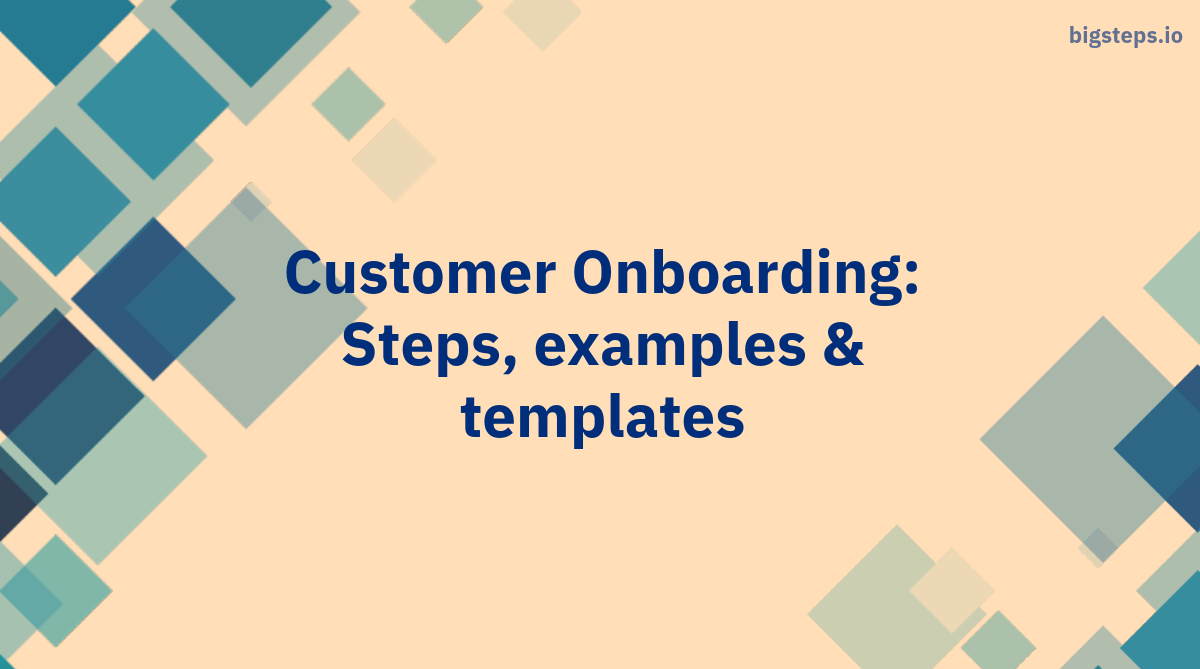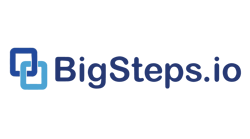Top 5 best Customer Onboarding practices for your B2B SaaS
Read Time 9 mins | Written by: Vaibhav Awachat

Success within the B2B SaaS market often hinges on customer onboarding - the first step in fostering a healthy, long-term relationship with your customers.
Let's delve deeper into every stage of the customer onboarding process, providing you with actionable insights and practical templates for immediate implementation.
Step 1: Kick off the Onboarding Journey Right
Every successful journey begins with detailed planning and clear communication. When kicking off the onboarding process, you need to ensure that your customers have a full understanding of what to expect.
A comprehensive kick-off call is crucial for setting a positive tone and building a strong foundation for the entire onboarding journey. The call should serve to:
- Understand the customer's goals and expectations
- Provide a high-level overview of the onboarding process
- Address any initial concerns and queries
Another important aspect of crafting a personalized onboarding experience is ensuring clear communication and setting realistic expectations. By clearly explaining the onboarding process, timeline, and potential challenges, you can manage customer expectations and minimize any potential frustrations. Additionally, actively listening to customer feedback and addressing their concerns promptly can contribute to a positive onboarding experience.
Start by sending an email to introduce yourself, and brief about the upcoming kick off call.
Dear [Customer's Name],
We are excited to embark on this journey with you. This email marks the official welcome and the start of our [Product Name] onboarding process.
During our upcoming kick-off call, we'll get to know more about your goals, discuss the onboarding process, and address any queries you may have.
Attached is an outline of our onboarding process for your reference. We value your time and aim to make this process as smooth and effective as possible.
Please feel free to contact me directly if you have any questions. Looking forward to our call.
Best,
[Your Name]
[Your Position]
- Introduction: Introduce the onboarding team and reiterate your commitment to the customer's success.
- Customer’s Goals and Objectives: Discuss the customer's expectations, desired outcomes, timelines & any important upcoming events.
- Alignment & Expectation Setting: Misunderstandings or unrealistic expectations can lead to dissatisfied customers and strained relationships, which may tilt the scales against your favor in the longer run. Kick off calls are the best place to address all the concerns.
- Onboarding Roadmap: Present an overview of the onboarding journey, step by step, with estimated timelines.
- Key Milestones & Deliverables: Highlight key milestones and what the customer can expect at each stage.
- Next Steps: Discuss the immediate next steps after the kick-off call, such as account creation, admin user setup, etc.Your B2B buyers should feel fully informed about what they are buying, how to optimize its usage, and whom they should approach if they face any issues.
Your B2B buyers should feel fully informed about what they are buying, how to optimize its usage, and whom they should approach if they face any issues.
To kick-start the call, you could say:
"Hello [Customer's name]. I'm [Your name], and I will be assisting you throughout your onboarding process. Today's call aims to understand your expectations, walk you through our onboarding journey, and address any concerns you may have."
To wrap up:
"Thank you for your time, [Customer's name]. We'll send a follow-up email summarizing today's discussion. We're excited to begin this journey with you and deliver a smooth and effective onboarding experience."
Step 2: Identify Vital Stakeholders
Establishing a comprehensive map of stakeholders is pivotal to the onboarding process. It helps ensure smooth communication, roles distribution, and accountability.
During your kick-off call, ask your customers to identify the key stakeholders on their end. These could range from business leaders, IT administrators, to end users who will be directly interacting with your software. Ask questions such as:
- Who are the key people who will be using/connecting with our product?
- What will be the primary point of contact for the ongoing conversations?
- Who should I reach out to if I need quick feedback or approvals for different stages of onboarding?
Remember to record this information systematically, as it should serve as your primary reference point for all future interactions related to the onboarding process.
Step 3: Orchestrate the Onboarding Mechanics
The mechanics of onboarding involve several intricate processes, including account creation, adding admin users, training sessions, and more. Efficiency and consistency at this stage are integral to customer satisfaction, and automation can be a powerful ally in accomplishing this.
Consider the following to orchestrate onboarding mechanics:
- Account Setup: Utilize automation for flawless, speedy account creations. This includes setting up admin accounts, allocating access rights, and configuring initial settings.
- Training Sessions: Develop comprehensive training sessions for different user roles, be it admin roles, professionals, or daily end users. Leverage a blend of resources, from written guides to video tutorials and interactive webinars.
- Personalizing Experience: Considering the customer's goals and expected outcomes, create personalized guides or tutorials that highlight the features and functions most relevant to them.
To schedule training, consider round robin scheduling, where each customer gets dedicated time. It allows for an ergonomic distribution of the onboarding specialists' time and resources. Alternately, in-the-product training can be used where customers are guided through features using interactive guides within the product.
For group training, consider bringing customers with similar needs together. This allows participants to learn from each other's questions and discussions. Remember to record and share the session — some customers might appreciate revisiting the training at their own pace.
Providing Clear and Accessible Onboarding Resources
Clear and accessible onboarding resources play a crucial role in helping customers quickly familiarize themselves with your product and get up to speed.
In addition to written resources, consider offering interactive training sessions or webinars to provide hands-on guidance and answer any questions in real-time. This can help customers feel supported and confident in using your product. Furthermore, ensure that your onboarding resources are easily accessible through a user-friendly interface, such as a dedicated onboarding portal or a centralized knowledge base.
Step 4: Integration, Testing, Pilot and Go-live Phases
This stage marks the transition of your customer from newly onboarded to fully integrated. It requires meticulous planning and execution, covering data transfer, infrastructure setup, testing, and finally, going live.
An onboarding specialist should be on standby for quick support, helping customers to truly understand the value proposition of your product before going live.
Integration and Data Upload:
To get the customer’s system on the same blueprint with your solution, data integration is crucial. This could involve uploading customer's current data into your system and ensuring it's mapped correctly.
You could utilize a pre-set template for data upload. It's essential to clearly state the data format requirements to prevent errors during the data upload. A potential email to a customer requesting for data could be patterned as shown below:
Subject: Request for Data Upload
Dear [Customer's Name],
As we progress in our onboarding process, it is time to integrate your data into [Product Name] for a seamless experience.
Attached to this email is a template which outlines our data format requirements. Please use this template to prepare your data.
Should you encounter any challenges or have any questions, feel free to reach out. We're here to assist.
Best,
[Your Name]
[Your Position]
Infrastructure Setup:
In some cases, setting up the customer domain using CNAME might be necessary. This technical step should be guided by a detailed and easy-to-follow guide that you could develop in-house. For complex technical steps, consider scheduling a call with the customer's IT team.
Testing & Pilot:
Once all the necessary data has been integrated and infrastructure setup is complete, you move on to the testing phase. It's important to ensure that everything works perfectly before going live.
A smaller group of users can serve as a pilot team, using and testing the product. This gives you a chance to address any bugs or issues that arise before the product goes live to the wider user group.
Going Live:
Once testing concludes successfully, it's time for your customer to go live. Support should be readily available as users start engaging with the product in a live environment. Regular pre-scheduled check-ins should continue to ensure a smooth experience and iron out any potential wrinkles in the process.
Subject: Success! You're Live with [Product Name]
Dear [Customer's Name],
Fantastic news! We've successfully wrapped up the onboarding process, and you're now fully operational with [Product Name]. This is quite the milestone, and we couldn't be happier for you.
As you familiarize yourself with all the functionalities of our product, we're certain you'll begin to realize its transformative benefits swiftly.
And remember, although the onboarding phase is complete, our commitment to assisting you remains unwavering. We're just a call or email away, ready to support you as you venture into this new phase. Also, stay tuned for our upcoming check-ins, designed to ensure that your experience with [Product Name] remains seamless.
Once again, congratulations on going live. We're excited about the promise of our partnership and looking forward to witnessing your accomplishments with [Product Name].
Best wishes,
[Your Name]
[Your Position]
Step 5: After Go-live: Being Proactive with Continuous Improvements
Once your customer's account is live and they are comfortable with the basic functionality, your focus should shift to regularly enhance their experience.
Feedback is your most valuable tool in this continuous cycle of improvement.
Develop a detailed feedback form and share it with your customers via a well-structured email:
Subject: Your experience with [Product Name]
Dear [Customer's name],
As you have recently completed our onboarding process, we would appreciate your feedback to help us enhance our future onboarding experiences. It should take no more than [time], and your insights would be greatly appreciated.
[Insert Feedback Form Link]
Thank you for being a valued customer.
Best,
[Your Name]
[Your Position]
Template for a detailed feedback form
1. What did you appreciate most about the onboarding process?
2. What was your most frustrating experience with the onboarding?
3. How confident do you feel in using [ Product Name ] after onboarding?
4. How closely did the product meet your expectations post-onboarding compared to what was initially presented or promised during the sales process?
Next Step: Continuously Monitoring and Improving the Onboarding Process
Customer onboarding is not a one-time event but an ongoing process that requires continuous monitoring and improvement. By regularly evaluating the effectiveness of your onboarding process and gathering feedback from customers, you can identify areas for improvement and make necessary adjustments to enhance the overall onboarding experience.
One way to monitor the onboarding process is by tracking key metrics, such as time to first value, customer activation rate, and user engagement. These metrics can provide insights into the effectiveness of your onboarding efforts and help you identify any bottlenecks or areas of improvement.
Additionally, actively seeking feedback from customers through surveys or one-on-one interviews can provide valuable insights and uncover any pain points or areas where additional support may be needed. By taking a proactive approach to monitoring and improving the onboarding process, you can continuously optimize the customer experience and drive long-term success.
In the end, effective customer onboarding is about creating a perception of value as soon as possible, setting the stage for a smooth customer journey, and building a solid foundation for a healthy, long-term customer relationship. Use these best practices and templates as a guide while designing your onboarding process, and ensure to adapt them to your business's unique needs and circumstances.
Read More: How to design `Customizable B2B Customer Onboarding Templates`?
